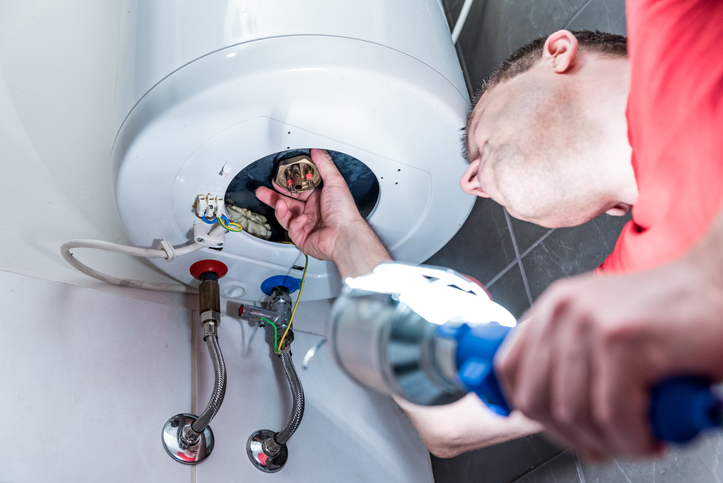If you’re looking for a home maintenance project over the long Spring Break, flushing out your tank water heater is a simple and effective way to ensure peak performance. If you own an insulated tank water heater (like the majority of homes), minerals from the water, in addition to sand and debris from the water line, will eventually start to settle at the bottom. This sediment build-up happens over time and can affect the water quality and performance of the unit. Sediment can also clog up the drain and complicate annual maintenance – which essential for an extended life.
A typical gas or water heater should be flushed every couple of years, depending on the mineral content in your water. If your source is a well or your city water supply contains a high percentage of sediment, you should flush out your tank every year. A typical water flush shouldn’t take more than a couple of hours to complete. If you’ve never attempted it before, give yourself a longer window to make sure that each step is performed correctly. Some water in tank heaters can remain scalding hot for several hours after the unit has been turned off, so either turn it off the night before – or wait a few hours before maintenance. Always read the manufacturer’s directions before attempting any DIY work on your water heater as some might have different design components.
Supplies:
- Gloves
- Hose
Bucket (Optional)
-
Turn off the Water Supply
The first step is turning off the water supply to the tank. The cold water supply valve is located at the top of the unit. Simply turn it clockwise to shut it off. Wearing work gloves to protect your hands is recommended.
-
Turn off the Water Heater
If you own a gas unit, set the thermostat to the “pilot” setting. An electric water heater must be turned off at the breaker box.
-
Attach a Hose
Toward the bottom of the tank you will find the drain valve. Some units may have a cover to protect the valve, so a bit of searching might be involved. Once you locate the valve (which is similar to a water fixture outside your home) attachment a common garden hose. Place the other end of the hose near a drain or a driveway; somewhere the hot water can flow safely. Some people use a bucket to catch the water if there isn’t a convenient place for the water to drain. Make sure to take extra precautions if using a bucket.
-
Open a Nearby Tap
To alleviate pressure and to ensure that the water drains quickly, find the nearest sink and turn on the hot water tap.
-
Open the Drain Valve
After you have alleviated pressure in the system, open the drain valve. Now the water should flow freely from the tank – unless there is sediment blockage. If the water doesn’t flow at a good pace, the drain valve might be clogged. If you have any issues with the drainage you should call a plumbing professional to assess the problem. Once all the water has been drained, add some more water by turning on the cold water supply. This will help stir up the remaining sediment at the bottom. Watch the water coming from the hose and make sure that it runs clear. If there appears to be more sediment, turn on the cold water again. Repeat this step until the water coming from the hose is clear.
-
Refill the Tank
After the water has been drained successfully, close the valve and remove the hose. Turn on the cold water supply and begin to fill up the tank. Check the hot water tap that was opened and, when it starts to run cold water, turn it off. Make sure that the drain valve is shut off and not leaking any water.
-
Return Power
Once the tank is filled, switch the gas valve from the pilot position back to “on” – or restore the power back to the electric unit.
Remember that if you ever have a problem with your tank or tankless water heater, our licensed, experienced staff can help! We can also flush the tank for you if you’d like a professional to oversee the job. Call us at 423-616-1025 or 706-516-1980 to schedule an appointment today!
Metro Plumbing, Heating, and Air Conditioning is the service company you want! Call us today at (423) 616-1025!




